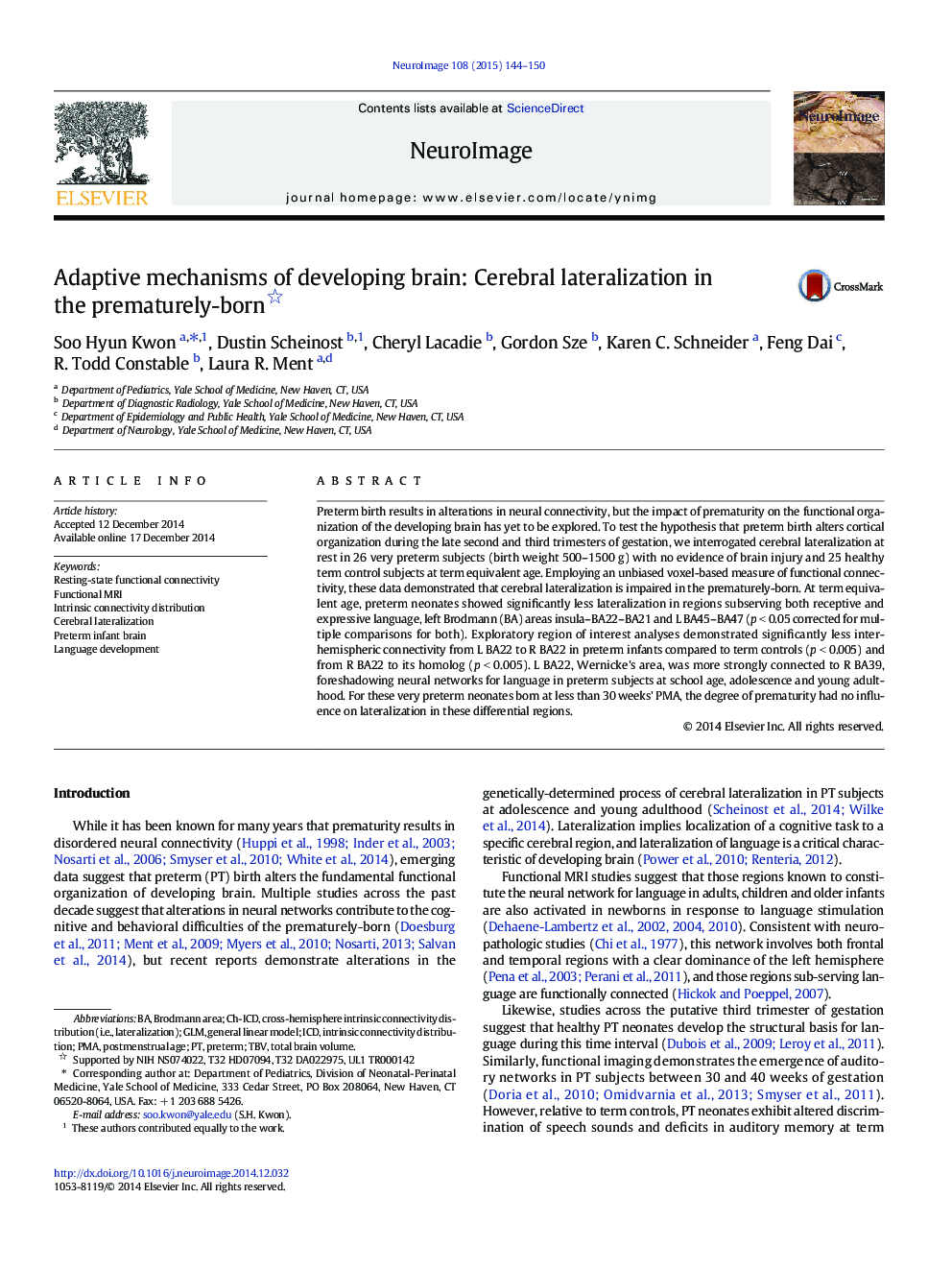| Article ID | Journal | Published Year | Pages | File Type |
|---|---|---|---|---|
| 6025860 | NeuroImage | 2015 | 7 Pages |
â¢We compare cerebral lateralization in preterm and term neonates at term age.â¢Preterm neonates have altered lateralization in left hemisphere language areas.â¢L BA22, Wernicke's area, is more strongly connected to R BA39 in preterm neonates.â¢Results foreshadow findings in preterm children, adolescents and young adults.â¢Preterm birth at very low postmenstrual age alters corticogenesis.
Preterm birth results in alterations in neural connectivity, but the impact of prematurity on the functional organization of the developing brain has yet to be explored. To test the hypothesis that preterm birth alters cortical organization during the late second and third trimesters of gestation, we interrogated cerebral lateralization at rest in 26 very preterm subjects (birth weight 500-1500 g) with no evidence of brain injury and 25 healthy term control subjects at term equivalent age. Employing an unbiased voxel-based measure of functional connectivity, these data demonstrated that cerebral lateralization is impaired in the prematurely-born. At term equivalent age, preterm neonates showed significantly less lateralization in regions subserving both receptive and expressive language, left Brodmann (BA) areas insula-BA22-BA21 and L BA45-BA47 (p < 0.05 corrected for multiple comparisons for both). Exploratory region of interest analyses demonstrated significantly less inter-hemispheric connectivity from L BA22 to R BA22 in preterm infants compared to term controls (p < 0.005) and from R BA22 to its homolog (p < 0.005). L BA22, Wernicke's area, was more strongly connected to R BA39, foreshadowing neural networks for language in preterm subjects at school age, adolescence and young adulthood. For these very preterm neonates born at less than 30 weeks' PMA, the degree of prematurity had no influence on lateralization in these differential regions.
